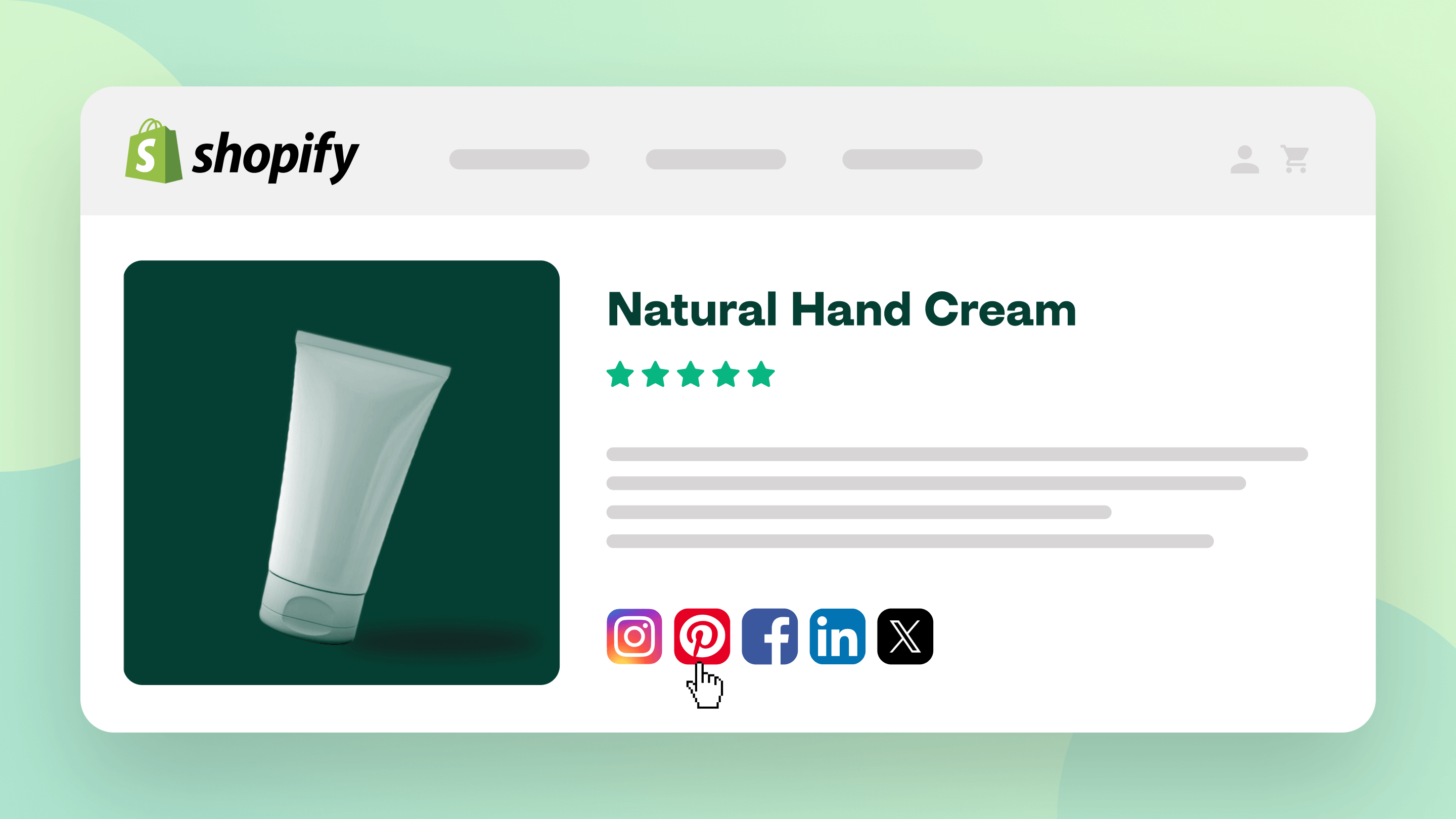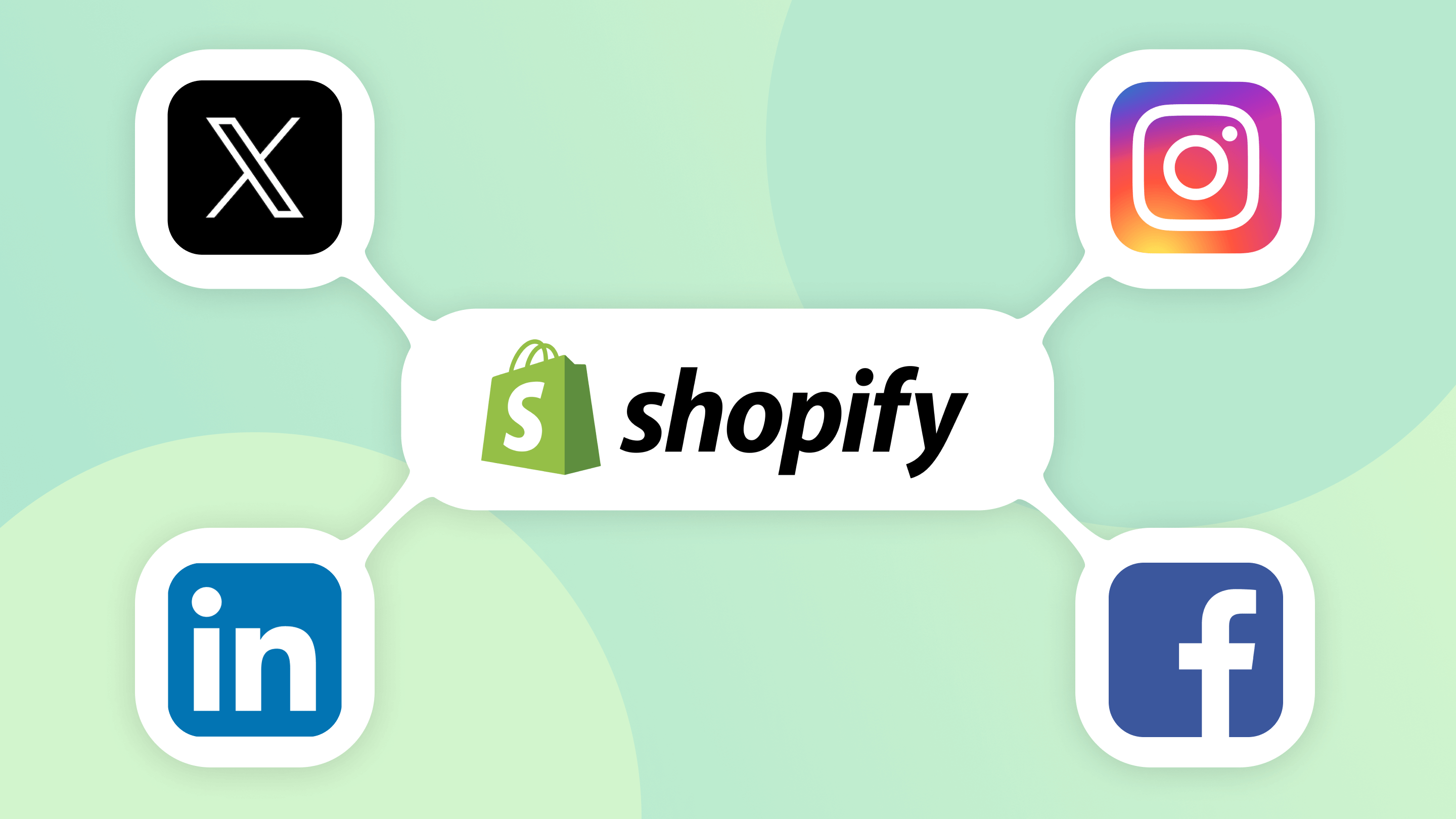The social media market, currently valued at $49 billion, is anticipated to grow at a rate of 26.2% through 2030. Factors such as improved global internet access and the proliferation of smartphones contribute to this growth. That is the one of the reasons for around 4.9 billion people globally to use social media, and it is expected that this number will reach about 5.85 billion by 2027.
Serving both communication and introductory purposes, social media is increasingly being used as a direct sales channel, with features like “click-to-buy”. Alternatively, a business owner may enrich his strategy by launching shoppable posts. 87% of sellers confirm that social selling has been effective for their business. About 59% of them say their company is making more sales through social media compared to previous years. 61% of organizations engaged in social selling report their revenue growth.
Should you choose social media over Google search?
There are two main channels to target people online - social media and Google. With each tick of the clock, Google navigates through 99 000 search inquiries, resulting in a daily total of 8.5 billion searches and an annual accumulation edging close to 2 trillion across the globe. Google is visited by over 83 billion users monthly. Social media can be viewed on par with the Google search as they are used by 5.07 billion people globally. Facebook, YouTube, Instagram and TikTok are the top media by popularity.
Therefore, a question arises should you choose social media over Google search? Shortly, neither channel is inherently better. Ultimately, the choice isn’t necessarily about one being better than the other; it’s about which channel aligns best with the business goals and where potential customers are most active. A balanced approach that utilizes both channels’ strengths could be the most effective strategy.
Factors for decision-making when considering social media vs Google search:
- Social media:
- Advantages:
- Engagement: Directly interact with customers, fostering meaningful connections.
- Targeting precision: Employ advanced targeting features to reach specific demographics.
- Brand storytelling: Utilize the platform to introduce to more people by crafting interesting to read stories that shape the brand identity.
- Visual emphasis: Perfect for showcasing products with strong visual appeal.
- Disadvantages:
- Limited attention span: Risk of content getting lost in the noise of social media.
- Continuous maintenance: Regular content updates are essential to maintain visibility.
- Google Search:
- Advantages:
- Intent: Users demonstrate clear intent when searching, indicating potential purchase interest.
- SEO value: Long-term cost efficiency through organic traffic generated by SEO efforts.
- Measurable results: Easy tracking of ROI using tools such as Google Analytics.
- Disadvantages:
- Competition: Intense competition for top search keywords can be challenging to overcome.
- Time investment: SEO strategies require patience as results may take time to materialize.
Top social media for Shopify product placement
Selecting the best medium to display a product requires evaluating the goals of the marketing plan, the distinctive qualities of the product, and the tastes of the target consumers. Influencers are essential for increasing the visibility of launched initiatives. Reviewing the demographic information of various platforms helps in making educated decisions. Additionally, examining engagement metrics and the results of earlier campaigns on these platforms can yield valuable insights. It's also helpful to consider the platform's content style and user interaction trends to better match the product placement.

Updated knowledge on the premier digital social channels highlight the following key services for effective product placement:
- Instagram: Recognized for its emphasis on captivating imagery, Instagram emerges as an ideal platform for seamless product placements, especially through collaborations with influencers who seamlessly integrate products into their content.
- YouTube: Positioned as the world's second-largest search engine, YouTube offers abundant opportunities for product placements within video content, ranging from subtle appearances to in-depth product demonstrations and reviews.
- Facebook: With its expansive user base, Facebook presents avenues for precise product integrations, allowing brands to target specific demographics through sponsored posts and targeted ads tailored to individual preferences.
- Twitter: Renowned for its real-time updates and concise communication style, Twitter serves as a platform for product placements through succinct tweets and influencer collaborations, ensuring immediate engagement with audiences.
- TikTok: Emerging as a favorite among younger demographics, TikTok's short-form video content provides an ideal platform for innovative and engaging product placements, enabling brands to connect with audiences through creative storytelling.
Tips to promote Shopify store on social media
In addition to exploring alternative approaches to elevate the visibility of a Shopify store across various social media channels beyond just including links to its media profiles on the website, consider amplifying the reach of a store with these actionable strategies.
Compelling social media profiles
Hone the method of handling Shopify store social media accounts by identifying the elements that connect best with the intended audience. Briefly said, this includes incorporating relevant keywords, developing a succinct narrative that encapsulates the essence of the Shopify store. Creating compellingly integrated clickable links to flawlessly navigate users to the store's platform.
Confirm that the quality of the content presented on the various social media platforms linked to a Shopify store remains with a consistent level of excellence across all social pages and posts:
- Profile picture: Having a recognizable face always benefits to popularity, and this goes for a profile picture. A recognizable profile picture is essential for a Shopify store's social media presence. It's usually recommended to use the store's logo or a well-known product image. If you decide on a product image, ensure it matches the store's identity.
- Bio/description: A social media profile's bio/description provides a brief summary of the brand, helping visitors get a sense of what it's about. Keeping the text straightforward is crucial to encourage users to learn more. Incorporating relevant keywords related to the products/industry can also help the profile rank better in search engines.
- Content strategy: To sustain interest from users, it's crucial to frequently update the social media presence of a Shopify store. Developing appealing appearance involves devising a content strategy that mirrors the brand's identity and resonates with the target audience. This includes curating a diverse range of content, such as product visuals, user-generated posts, exclusive glimpses backstage, promotional content, and more. The content should be visually stimulating/educational/engaging/encouraging curiosity. It should foster interaction among followers.
- Consistency: For a social media profile to stay popular, consistency is key. This includes regularly sharing content, keeping a consistent brand tone and appearance, and ensuring all posts reflect the brand's values and message. Consistent posting helps the brand stay visible to followers and boosts its engagement across social media platforms.
- Engagement: Establishing relationships on social media depends on interacting with followers. This includes responding quickly to comments, thanking them for their support, and taking part in discussions that relate to the brand or industry.
- Drive traffic to Shopify store: To draw more visitors, it's important to have links to the Shopify store in the social media profile. These links should be easy to see and take users to pages where they can learn about the products and buy them.
Optimize Facebook Shopify store profile
Elevating the Facebook profile of a Shopify store should be focused on amplifying visibility, engagement, and, in the end, transactions. Here are some practical pointers for effectively refining a Shopify store's presence on Facebook:
- Create a Facebook Business page: Start by establishing a specialized business page on Facebook specifically for the Shopify store. Incorporate the brand's name and upload either a polished profile picture or the store's logo. Consider including a captivating video that effectively showcases Shopify store's offerings. Ensure that the bio or description provides a thorough overview of items/services the store provides.
- Set up a Facebook Shop: Sync Shopify store's inventory with Facebook, enabling customers to effortlessly buy products directly through the platform. This streamlined integration has the capacity to bolster sales by drawing in users who frequently engage with Facebook.
- Use Facebook Ads: Leverage Facebook ads to target specific people, who have the highest probability of becoming customers. Utilize dynamic ads to retarget visitors with specific products they viewed on Shopify store site.
- Engage with media content: Consistently share top-notch visuals such as photos, videos, and live broadcasts to captivate audience. Facebook's algorithm prioritizes engaging multimedia content, which can amplify the visibility of the Shopify store's social media presence.
- Feature user-generated content: Feature customer reviews and user-contributed photos prominently on Shopify store Facebook page. Utilizing user-generated content not only strengthens credibility but also stimulates greater customer engagement.
- Employ Facebook analytics: Monitor and evaluate the performance of store social media profile by employing Facebook Page Insights. This tool furnishes insights into audience behaviors and engagements with store social media page.
Optimize Instagram Shopify store profile
To optimize Shopify store profile on Instagram through the following algorithm to enhance visibility:
- Set up an Instagram Business Account: Start by converting a personal Instagram account into a business account. This gives access to features like Instagram Insights, ads, and the ability to add a contact button. Business accounts can also use the Instagram shopping feature, allowing direct product tagging in posts
- Optimize store profile bio: Make the most of Shopify store Instagram bio by providing a clear store description, integrating a clickable link to significant ongoing marketing or sales endeavors, and offering readily accessible contact information.
- Use high-quality visuals: It's important to recognize that Instagram is predominantly a visual platform, meaning that image quality plays a crucial role in eventual outcomes. Publish high-quality photos and videos that effectively showcase goods in an attractive light. Make use of Instagram's editing tools to polish and improve these visuals.
- Leverage Instagram shopping: Leverage Instagram's shopping capabilities by tagging products in Shopify store posts and stories, facilitating a streamlined shopping process for the followers. It's imperative to ensure that Shopify store is seamlessly connected and synced with Instagram business account to activate this feature.
- Engage with user-generated content: Motivate customers to upload photos of products and tag Shopify store in their posts. Featuring this user-generated content on sore social media profile not only reinforces trust but also encourages community participation.
- Implement hashtag strategies: Employ appropriate and popular hashtags to expand the exposure of posts published in the Shopify store social media profile. Discover the most impactful hashtags within the chosen business niche and incorporate them into published content.
- Run targeted ads: Harness Instagram advertising to extend social media profile reach to a broader spectrum of viewers. These ads offer precise targeting options, guaranteeing that they are displayed to potential customers who are highly likely to find store items appealing.
- Collaborate with influencers: Team up with influencers who align with the values of Shopify store brand. Tap into their followers through authentic storytelling and personal endorsements. These influencers can significantly amplify brand's message. .
- Regularly update content: Keep the Instagram feed fresh and engaging with new postings on a regular basis. Utilize a content calendar to maintain a consistent posting schedule.
Optimize TikTok Shopify store profile
TikTok, being one of the most influential social media in the world, has a potential to influence the Shopify store business results. Optimize Shopify store TikTok profile through the following practices:
- Set Up a TikTok Business Account: Switch to a TikTok business account to gain access to enhanced features, including analytics and advertising capabilities. This allows for more precise content customization to effectively engage target audience.
- Integrate Shopify with TikTok: Harness the benefits of connecting Shopify store catalog and TikTok. Integrate product links seamlessly into TikTok content, facilitating direct purchasing options for viewers. This cohesive integration has the capacity to drive sales directly from TikTok.
- Utilize TikTok’s tools for ads: Make use of TikTok's platform advertising capabilities. It offers automated features such as the Smart Performance Campaign, designed to optimize ads for conversions. This tool aids in targeting the most relevant audience.
- Engage through content: Produce captivating content that resonates with the TikTok audience. Utilize popular music, challenges, and cultural trends to amplify the relatability of the content of the Shopify store.
- Leverage user-generated content: Inspire content crafted by users to enhance the reach TikTok Shopify store profile to a broader spectrum of individuals. Additionally, user-generated content serves as a catalyst for building a tight-knit community around the brand.
- Keep with content updates regularity: Keep store's TikTok profile dynamic with frequent posts to sustain audience interest and interaction. Utilize TikTok's analytical tools to pinpoint the most opportune times to enhance the content publishing strategy.
Optimize Shopify store profile on X (Twitter)
To optimize Shopify store profile on Twitter (now known as X), one may refer to proven methods provided below.
- Setup social media profile: Ensure X (Twitter) profile looks professional with a clear, recognizable brand image and a compelling header brand image. A well-organized professionally-oriented profile helps make a positive first impression.
- Write engaging bio/description: Craft a concise description that communicates who the brand is and what it stands for. Include hashtags and a link to Shopify store to drive traffic directly from Twitter.
- Engage in Twitter Shopping: Leverage the Twitter sales channel. Integrate the Shopify store catalog to showcase it directly on Twitter profile.
- Stick to content strategy: Publish regular, engaging content that resonates with X audience. Make visually rich posts with quality images and videos to showcase store catalog content
- Pin important tweets: Pin major posts to the top to make important information highly visible, for example, promotions, announcements, best-selling products.
- Engage audience: Interact with X audience through polls and questions. This can also make store Twitter feed more fun.
- Optimize for search: Utilize relevant hashtags to improve the social media profile visibility.
Sync Shopify store inventory with social media

Optimizing a Shopify store profile on social media can often require syncing store's catalog with a social media platform. With a well-crafted product feed, the store can easily present its catalog to social media audience, finding new devoted clientele.
Here’s how having a feed connected and synced with social media is capable of enhancing shops' social media presence while simultaneously optimizing store's social media profile:
- Cross-platform consistency: Ensure product information is consistent across all social media platforms by using a single source of truth — your product feed. This builds trust with customers as they receive the same information wherever they find your products.
- Automated catalog updates: Utilize a product feed to keep product listings on social media up to date. This means any changes to product prices, descriptions, or availability that occur in the store are automatically updated to a social media platform.
- Dynamic advertising: A product feed can help leverage the power of the dynamic ads offered on platforms like Facebook and Instagram. These ads can additionally help to optimize social media presence by automatically showing relevant products to users based on their interests.
A Shopify store can utilize additional benefits available through well-crafted product feed:
- Live shopping features: On platforms such as Instagram and Facebook, live shopping experiences are possible. This real-time engagement with customers can lead to immediate sales, making it a valuable feature for businesses. Products can be showcased and sold during live broadcasts.
- Shoppable posts: By integrating store inventory with social media platforms like Facebook/Instagram/Pinterest, the ability to create shoppable posts becomes available. Clicking on products in posts provides users with a direct route to the checkout page on the Shopify store, simplifying the purchasing process..
- SEO and a wider reach: Optimizing product feed with relevant keywords and metadata can improve visibility not just on social media but also in search engine results, drawing more traffic to your store.
How to get a feed optimized for social media
Shopify stores can utilize a tool to quickly generate a feed optimized for social media. Simply check the Mulwi app in the Shopify app store to know its capabilities.
This tool provides full freedom on crafting any feed, which means it can help the store to connect to many social media. The feeds for key social media like Instagram, TikTok and X (Twitter) can be created in almost no time by using the standard templates for these social media provided by the Mulwi app.
Any prebuilt feed template can be modified in any way a store needs to help it achieve its goals in the task of optimizing social media profiles
Summarizing
In conclusion, the burgeoning social media's role offers a plethora of opportunities for businesses seeking to expand their reach. Nearly five billion users are active on various social media platforms, making them important channels for direct sales and brand marketing. Interestingly, these platforms are also increasingly challenging traditional search engines like Google.
By adopting a balanced and integrated approach that utilizes the strengths of social media channels, businesses can optimize their online presence.
Leveraging advanced targeting features, or crafting engaging content, each step in optimizing a social media profile can significantly enhance a brand’s visibility and influence. Therefore, businesses must focus on enhancing their social media profiles to effectively reach broad audience through higher visibility in social media realm. That is how businesses can capitalize on the opportunities presented by social media’s expansive reach.




